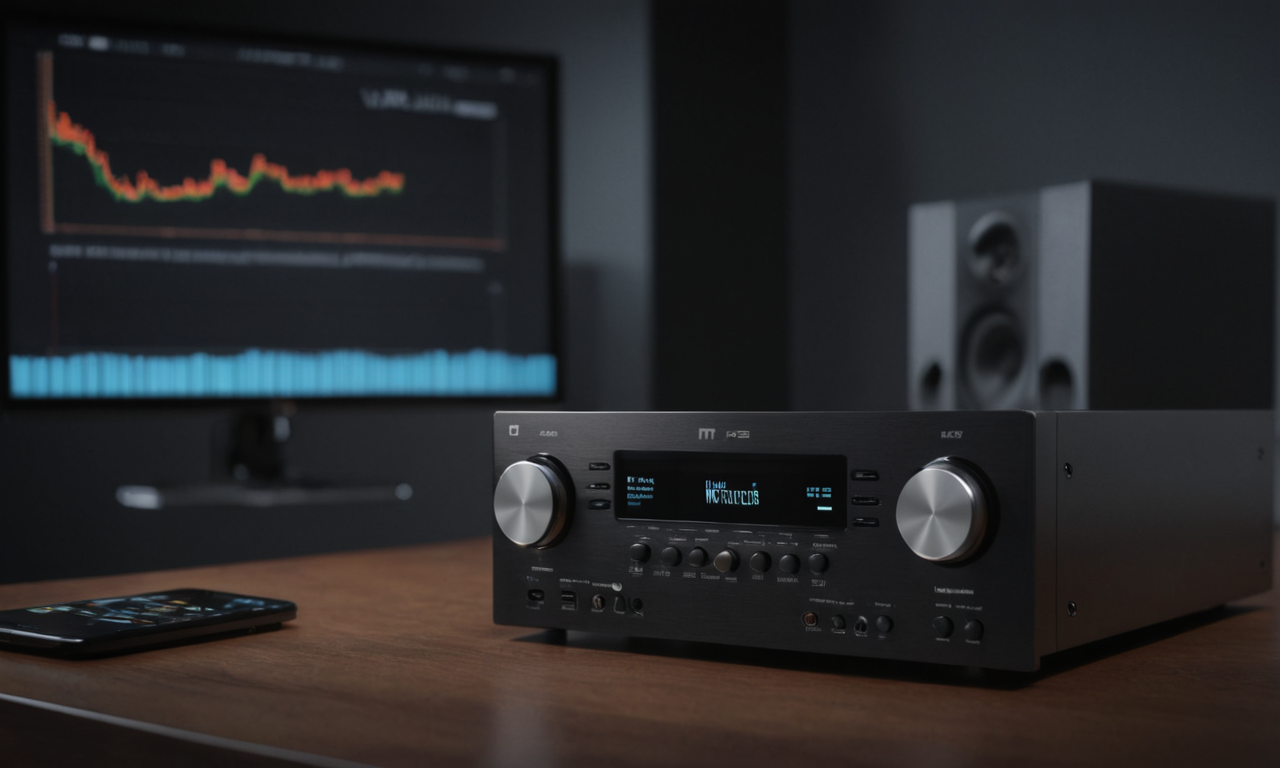Understanding Audio Formats: The Foundation of Great Visualization
When creating audio visualizations, the quality of your source audio directly impacts the final result. The choice between MP3 and WAV formats can mean the difference between a professional-looking waveform and a choppy, less detailed visualization. Let's explore how these formats affect your audio visualization projects.
MP3 Format: The Popular Choice
What is MP3?
MP3 (MPEG-1 Audio Layer III) is a lossy compression format that reduces file size by removing audio data that the human ear typically can't detect. This compression makes MP3 files much smaller and easier to share, which is why they became the standard for digital music distribution.
MP3 Characteristics:
- File size: Typically 1/10th the size of uncompressed audio
- Bit rates: Common rates include 128 kbps, 192 kbps, and 320 kbps
- Compression: Lossy compression removes audio data permanently
- Compatibility: Universally supported across all devices and platforms
MP3 for Audio Visualization:
Advantages:
- Faster processing: Smaller file sizes mean quicker upload and processing times
- Wide availability: Most music is already available in MP3 format
- Sufficient quality: 320 kbps MP3s can produce good visualizations
- Storage efficiency: Ideal for large music libraries
Disadvantages:
- Reduced detail: Compression artifacts can affect waveform accuracy
- Lost frequency information: High-frequency content may be missing
- Dynamic range compression: May result in less dramatic waveform variations
- Quality degradation: Lower bit rates produce less detailed visualizations
WAV Format: The Professional Standard
What is WAV?
WAV (Waveform Audio File Format) is an uncompressed, lossless audio format that preserves all the original audio data. It's the gold standard for professional audio production and provides the highest quality source material for visualization.
WAV Characteristics:
- File size: Much larger than compressed formats (typically 10x MP3 size)
- Bit depth: Common depths include 16-bit and 24-bit
- Sample rate: Standard rates include 44.1 kHz, 48 kHz, and 96 kHz
- Compression: No compression - all audio data is preserved
WAV for Audio Visualization:
Advantages:
- Maximum detail: Preserves all audio information for accurate waveforms
- Full frequency range: Complete spectrum analysis capabilities
- Professional quality: Industry standard for high-end audio work
- No artifacts: Clean, accurate visualization without compression artifacts
Disadvantages:
- Large file sizes: Can be 10-50 times larger than MP3 files
- Slower processing: Larger files take more time to upload and process
- Storage requirements: Requires more storage space
- Transfer limitations: May exceed file size limits on some platforms
Visual Quality Comparison
How Format Choice Affects Your Visualizations
Waveform Detail and Accuracy
The difference between MP3 and WAV becomes most apparent in the fine details of your waveform:
- WAV files: Show precise amplitude variations and subtle audio nuances
- High-quality MP3 (320 kbps): Nearly indistinguishable from WAV for most content
- Standard MP3 (192 kbps): Good quality with minor detail loss
- Low-quality MP3 (128 kbps): Noticeable smoothing and detail reduction
Frequency Response Visualization
Different audio formats affect how various frequencies are represented:
- High frequencies: WAV preserves all high-frequency content, while MP3 may cut off above 16-20 kHz
- Dynamic range: WAV maintains full dynamic range, MP3 may compress quiet and loud sections
- Transients: Sharp attacks and quick changes are better preserved in WAV format
Practical Recommendations
When to Use WAV Format
- Professional projects: When quality is paramount and file size isn't a concern
- Music production: For original compositions and master recordings
- High-end visualizations: When creating content for professional or commercial use
- Archival purposes: For permanent storage and future use
- Classical and acoustic music: Genres that benefit from full frequency range
When MP3 is Sufficient
- Social media content: When speed and convenience are priorities
- Podcast visualization: Spoken content doesn't require full frequency range
- Quick previews: For rapid content creation and sharing
- Large batch processing: When handling many files at once
- Mobile creation: When working with limited bandwidth or storage
Technical Considerations
File Size and Processing Time
Understanding the practical implications of format choice:
| Aspect | MP3 (320 kbps) | WAV (16-bit/44.1 kHz) |
|---|---|---|
| 3-minute song | ~7.2 MB | ~32 MB |
| Upload time (fast connection) | ~10-15 seconds | ~45-60 seconds |
| Processing time | Fast | Moderate |
Quality vs. Convenience Trade-offs
Consider these factors when choosing your audio format:
- Project timeline: Tight deadlines may favor MP3 for speed
- Final output quality: Professional work benefits from WAV source material
- Internet connection: Slower connections work better with smaller MP3 files
- Storage capacity: Limited storage may necessitate MP3 format
Conversion and Optimization Tips
Preparing Your Audio Files
Get the best results regardless of format choice:
- Normalize audio levels: Ensure consistent volume for better visualization
- Remove silence: Trim unnecessary quiet sections from beginning and end
- Check for clipping: Avoid distorted audio that creates poor visualizations
- Consider mastering: Well-mastered audio produces better waveforms
Format Conversion Best Practices
If you need to convert between formats:
- Always start with the highest quality source available
- Use professional audio software for conversions
- Avoid multiple compression cycles (MP3 to MP3)
- Keep original WAV files as master copies
The Bottom Line
For most audio visualization projects, both MP3 and WAV formats can produce excellent results. The choice depends on your specific needs:
- Choose WAV when: Quality is paramount, file size isn't a concern, and you're working on professional projects
- Choose MP3 when: Speed and convenience are important, working with social media content, or managing large numbers of files
Remember, a high-quality 320 kbps MP3 from a good source will often produce better visualizations than a poor-quality WAV file. The source material quality matters more than the format in many cases.
Start Creating Better Visualizations
Now that you understand the differences between MP3 and WAV formats, you can make informed decisions for your audio visualization projects. Simple Audio Visualiser supports both formats, ensuring you get great results regardless of your choice.

